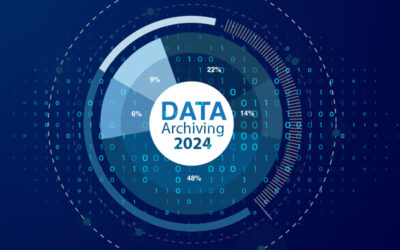With online banking, financial organizations have made it more convenient for customers to carry out cash transactions, thereby ensuring a much better customer experience. This option helps reduce large volume manual processing that can lead to inconsistent results and high error rate. Digitization is at the core of business advancement, and with the assistance of data conversion services financial organizations can turn digital. IT-enabled operation improves the efficiency and workflow of banks and other financial institutions.
While internet banking is growing significantly, financial organizations need to increasingly focus on the protection of critical data. Now, hackers are engaging in other types of fraud such as digital identity theft to steal money. They access another person’s online accounts and buy products and services and even transfer money by using that account information. The weakest link in the banking value chain that leads to data breach is the end user. Social engineering involves using deception to manipulate people into revealing confidential personal information and then using that information to commit fraud. One of the basic examples is criminals phoning up the customer and convincing them to move some or all of their money to a different account. The criminal helps the customers go through the process of money transferring easily. The current fraud detection systems have digital intelligence data that are focused on looking for evidence of the ‘third party’ fraud discussed i.e. unusual attempts to access online accounts. There are some indicators in digital intelligence data that helps to detect certain types of scams. Timing is very important, for example the time it takes them to log in and actually move the money can be slightly different from how they normally behave.
In the new era of digital intelligence, behavioral biometrics is used to identify fraud. It helps to look at each activity microscopically and identifies the timings and interactions or any behavioral anomalies using a keyboard, mouse or a mobile. But this technique could also be ineffective and it has a high number of false positives.
What to Do
Usually, for a scam to be successful, the cyber criminals must have bank accounts into which the victims can transfer money and these accounts are mule accounts. Once the victims transfer money to mule accounts it is transferred to another mule account and then the cash is withdrawn as early as possible. So banks are focusing on identifying mule accounts but with existing fraud models it is difficult to find them out because mules transfer the money between mule accounts. Moreover, analysis of these accounts will always be a lower priority for banks than real customers who are reporting actual fraud losses from their accounts.
Mule accounts form a complex network through which funds are transferred, often traversing multiple banks and crossing geographical borders. So it is difficult for banks to track money transfer and link accounts together. However, in the last few months banks have begun to revisit the digital intelligence to look for alternative ways to identify mule networks which has proven to be very successful. It turned out that links between mule accounts have been part of the digital identity data all along. The new model helps to identify these links in real time and blocks significant amounts of funds that are channelled through mule networks.
Mule networks are used for a wide range of criminal activities that include money laundering. So banks should never underestimate mule networks and take necessary steps to put an end to these. Advanced behavioral analytics is a model that helps banks detect mule accounts.
Banks and the general public need to stay alert and be wary of any unusual activity in their accounts. While we can always take safety measures and intimate the bank immediately if something happens, banks should also keep their databases free of any viruses, have regular checkups, tests and scans to avert any kind of malicious activity.
Document conversion companies facilitate digital transition for financial organizations and help them work towards a paperless office. This in turn ensures a systematic work environment and good customer relationship that are inevitable for the growth of the organization. However, there are vulnerabilities that come with technology that fraudsters exploit. Businesses have to guard against such concerns with effective security measures.




